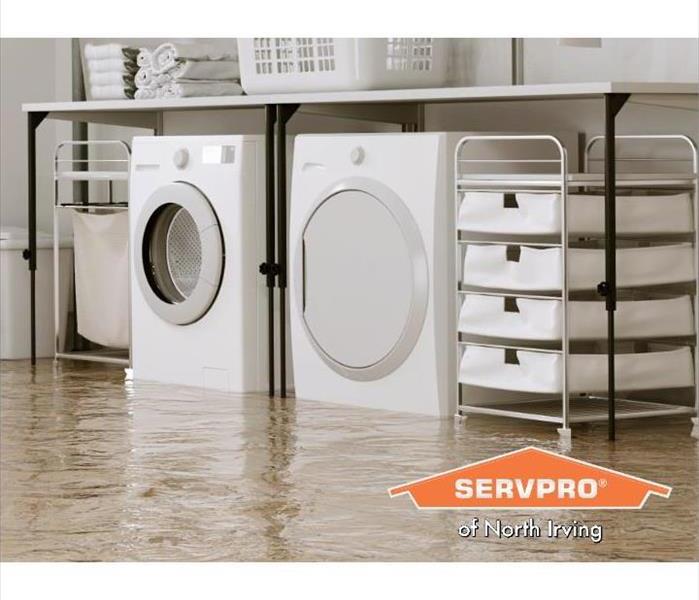How to Clean up Sewage in Basement
4/26/2021 (Permalink)
 Biohazard cleanup experts (including us at SERVPRO) strongly advise property owners to have the professionals approach a sewage mess.
Biohazard cleanup experts (including us at SERVPRO) strongly advise property owners to have the professionals approach a sewage mess.
The last time you were down in your basement it was clean and dry, and now it’s soiled with wastewater. How could this happen?
Clogs or damage to the sewer line or septic system is one cause. Another way this happens is when floodwaters from a storm have overwhelmed city sewers or caused sewage containment components to knock out of place. However sewage ends up in your basement, it needs to be removed carefully.
Biohazard cleanup experts (including us at SERVPRO) strongly advise property owners to have the professionals approach the sewage mess. But if you end up trying it yourself, we’ll share some tips on how to carefully handle this emergency situation.
Sewage is Hazardous to Your Health
Before you attempt to clean up a sewage mess, we must warn you that wastewater contains harmful chemicals and microorganisms. These toxins cause serious illness and sometimes death. Follow these guidelines before approaching a sewage mess:
- Do not allow contaminated water to come into contact with bare skin. When getting close to sewage contamination, don yourself with eye protection, rubber gloves, rubber boots, and other protective clothing.
- Be careful when washing or spraying off items, as this may spread contamination even further.
- Thoroughly clean and sanitize hands, clothing, boots, and anything else that was worn or used to clean up.
- Consult a healthcare professional to make sure that your vaccinations are up to date.
Steps for Basement Sewage Cleanup:
Below are the steps on how to safely clean up sewage in the basement:
- Step 1: As mentioned above, put on protective clothing and equipment.
- Step 2: Turn off any gas or water to the basement.
- Step 3: Open doors and windows to ventilate the area.
- Step 4: Remove contaminated items from the basement and put them into thick trash bags to contain them. This includes any carpet. Carpets and padding soaked with contaminated water most often need to be replaced.
- Step 5: Use a wet/dry vacuum (plugged into a grounded outlet) to extract the wastewater. Carefully empty the vacuum frequently either into a toilet or other passage to the sewer or septic.
- Step 6: If you have a drain that is not currently blocked, hose down all areas that were touched by the water and route the runoff to the working drain or sump pump.
- Step 7: Scrub all affected surfaces with hot soapy water. Follow up with a 1:1 bleach and water mix. Using a brush broom helps cover the floors.
- Step 8: Clean up reusable cleaning tools thoroughly or replace disposables with unused ones
- Step 9: Do another rinse with clean water, and follow up with another bleach rinse. Again, only do this if the runoff has a place to drain.
- Step 10: Clean washable items outside using a hose. Launder contaminated soft items in warm or hot water with one cup of vinegar added. Double bag non-washable items and throw them away.
- Step 11: Clean protective clothing separately. Clean reusable protective wear. Double bag disposable protective equipment and discard.
- Step 12: Using high-powered fans and sufficient ventilation, allow the basement to dry completely. Removing all moisture prevents mold growth.
Call SERVPRO of Dallas for Emergency Sewage Cleanup
SERVPRO is committed to public health for our community. This is why we strongly recommend that you call on the professionals to handle biohazardous materials, including sewage cleanup.
We are experts at saving items contaminated by water. Our Esporta Wash System restores soft goods and textiles to food-grade cleanliness.
If your basement has been affected by sewage, don’t delay! Contact us 24/7 at (972) 986-7677 for emergency contact.






 24/7 Emergency Service
24/7 Emergency Service